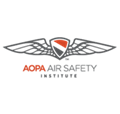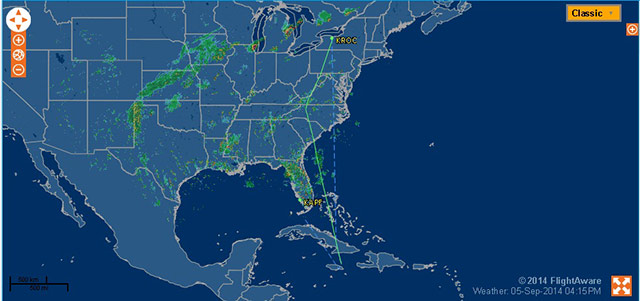TBM owner’s group chair crashes after becoming unresponsive
Air Safety Institute issues safety alert after suspected hypoxia incidents
TBM Owners and Pilots Association chairman Larry Glazer and his wife Jane were on board an airplane that crashed off the coast of Jamaica after the pilot became unresponsive Sept. 5, the couple’s family confirmed to NBC News. The two are presumed dead.
Glazer took delivery of one of the first Socata TBM 900 single-engine turboprops on March 24. That aircraft took off from Greater Rochester International Airport in New York at 8:26 a.m. Eastern time Sept. 5, according to data available from FlightAware.com, with a flight plan filed to Naples Municipal Airport in Florida. North American Aerospace Defense Command (NORAD) later reported on Twitter that two F-15 fighters were “currently escorting an unresponsive small aircraft over the Atlantic, possible hypoxia.” The FAA confirmed that the aircraft crashed about 14 miles off the coast of Port Antonio, Jamaica, at about 2:15 p.m., according to a later NORAD update. The U.S. Coast Guard initiated a search and rescue mission.
The accident comes a week after the pilot of a Cirrus SR22T became unresponsive and crashed about 50 miles southeast of Wallops Island, Virginia; that pilot may also have succumbed to hypoxia. With hypoxia a potential factor in two high-profile incidents of unresponsive pilots, the Air Safety Institute issued a safety alert reminding pilots of the typical symptoms of hypoxia, outlining strategies for detecting and communicating a hypoxia emergency, and providing further resources.
“Bottom line: If you fly regularly above 10,000 feet msl, a pulse oximeter should be part of your equipment and you should check your oxygen saturation levels regularly during the fight,” the alert states.
According to flight tracking data of the Sept. 5 flight from FlightAware.com, the TBM 900 climbed to 28,000 feet after takeoff and began a descent to 25,000 feet at 10:04 a.m. over North Carolina. According to ATC tapes available online here, the pilot reported an abnormal indication and requested lower altitudes. NORAD reported that two F-16s launched from McEntire Joint National Guard Base in Richland County, South Carolina, at 10:40 a.m. to investigate after the pilot did not respond to attempts to communicate, and handed off monitoring duties to the F-15s at 11:30 a.m.
The fighters broke off trail and returned to base for refueling while the TBM passed through Cuban airspace, and NORAD continued to monitor the flight path by radar, the bi-national command reported. The aircraft remained at 25,000 feet until it crashed, according to FlightAware.com data.
The accident evokes the memory of the Learjet 35 crash that killed professional golfer Payne Stewart in October 1999. The Learjet experienced a loss of cabin pressure, the occupants lost consciousness, and the airplane flew from Orlando to South Dakota on autopilot; the intended flight path was from Orlando to Dallas. After the airplane exhausted its fuel, it stalled and crashed near Aberdeen, South Dakota.
The TBM 900 cockpit is equipped with a G1000 avionics suite with highly integrated functions. One of them automatically sets and adjusts cabin pressure after the pilot enters the destination airport on the G1000’s multifunction display.
Glazer was an experienced pilot with a reported 5,000 hours flying TBMs; AOPA reported earlier this year that this was the third TBM Glazer has owned.
Download the safety alert
 Typical symptoms of hypoxia include cyanosis (blue fingernails and lips), decreased reaction time, and euphoria, but each pilot's physiological symptoms are unique. Find out more on the subject of hypoxia in the Air Safety Institute's safety alert.
Typical symptoms of hypoxia include cyanosis (blue fingernails and lips), decreased reaction time, and euphoria, but each pilot's physiological symptoms are unique. Find out more on the subject of hypoxia in the Air Safety Institute's safety alert.




